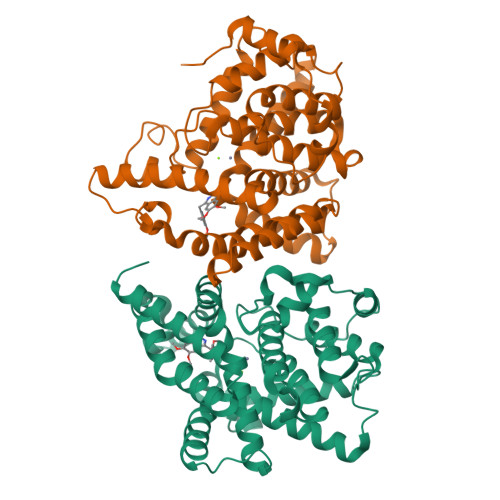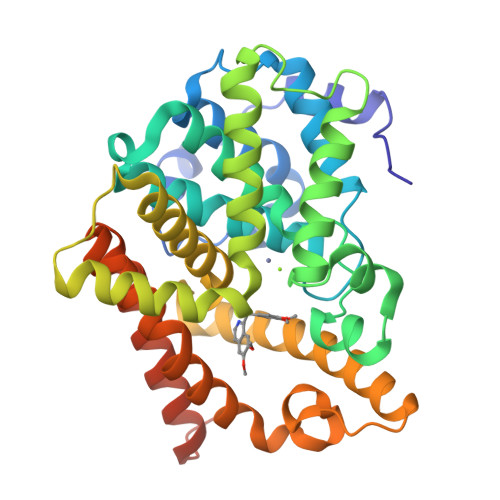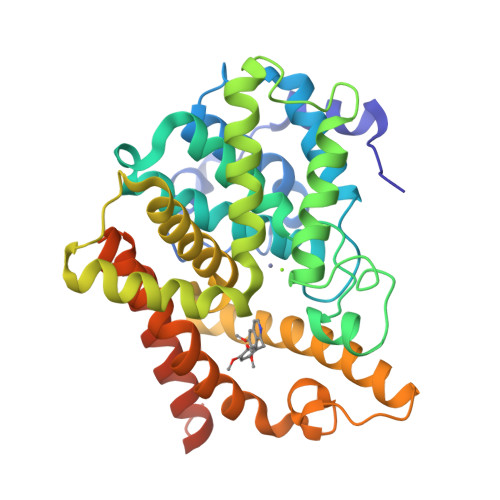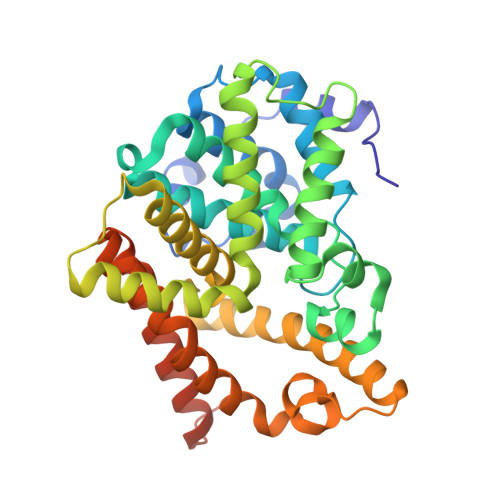Cross-Linking of Protein Crystals as an Aid in the Generation of Binary Protein-Ligand Crystal Complexes, Exemplified by the Human Pde10A-Papaverine Structure.
Andersen, O.A., Schonfeld, D.L., Toogood-Johnson, I., Felicetti, B., Albrecht, C., Fryatt, T., Whittaker, M., Hallett, D., Barker, J.(2009) Acta Crystallogr D Biol Crystallogr 65: 872
- PubMed: 19622871
- DOI: https://doi.org/10.1107/S0907444909017855
- Primary Citation of Related Structures:
2WEY - PubMed Abstract:
Protein crystallography has proven to be an effective method of obtaining high-resolution structures of protein-ligand complexes. However, in certain cases only apoprotein structures are readily available and the generation of crystal complexes is more problematic. Some crystallographic systems are not amenable to soaking of ligands owing to crystal-packing effects and many protein-ligand complexes do not crystallize under the same conditions as used for the apoprotein. Using crystals of human phosphodiesterase 10a (hPDE10a) as an example of such a challenging crystallographic system, the structure of the complex with papaverine was obtained to 2.8 A resolution using protein crystals cross-linked by glutaraldehyde prior to soaking of the ligand. Inspection of the electron-density maps suggested that the correct mode of binding was obtained in one of the two monomers in the asymmetric unit and inspection of crystal-packing contacts explained why cocrystallization experiments and soaking of crystals that were not cross-linked were unsuccessful.
Organizational Affiliation:
Evotec UK Ltd, Abingdon, Oxfordshire OX14 4SA, England.






















